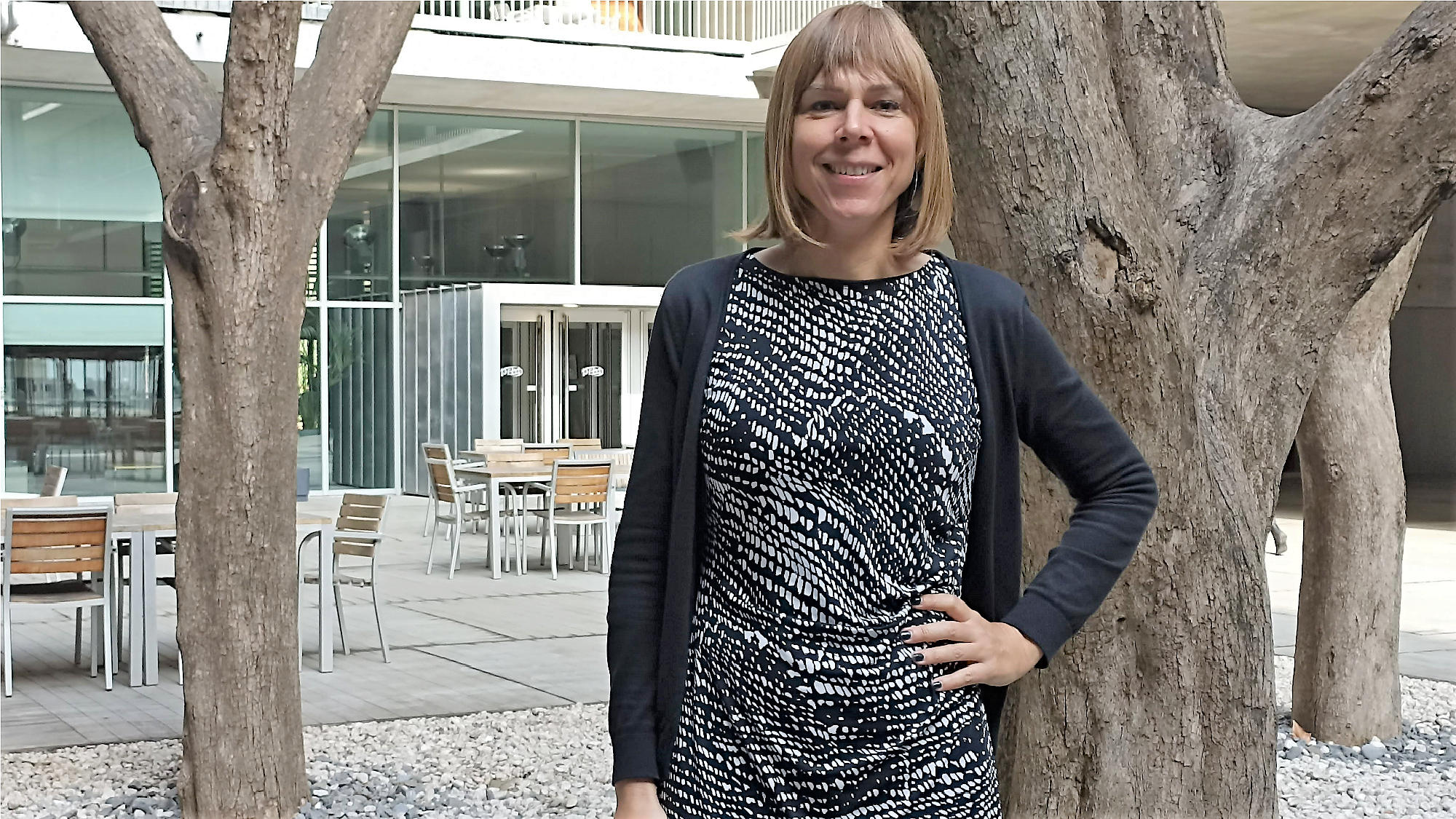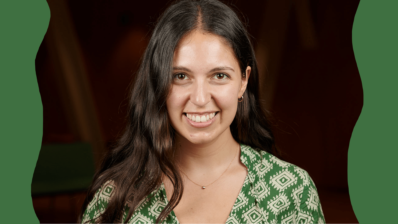Today, 31 March, is International Transgender Awareness Day. There is not much data, and perhaps not much visibility, but transgender people in science do exist.
Like Brigitte Baptiste, a biodiversity expert, who was the director of the Alexander von Humboldt Biological Resources Research Institute in Colombia, and is currently the rector of the EAN University, also in Bogotá.
Or Ben Barres, a neurobiologist at Stanford University, who in 2013 became the first openly transgender scientist at the US National Academy of Sciences.
Or Marta Román, researcher at the Hospital del Mar Medical Research Institute (IMIM) and member of the LGTBIAQ+ group at the Barcelona Biomedical Research Park (PRBB).
Marta arrived at the PRBB when the PRBB didn’t even exist. “From the very day it opened, I started working in the building”, she recalls. She stayed at the Park, where she did her PhD at the Epidemiology and Evaluation Service of the IMIM-Hospital del Mar, until 2013, when she went to Norway for 3 years. Upon her return, Marta rejoined the epidemiology service, where she currently combines her research activity – supervising PhD students in the early detection of breast cancer – with her healthcare activity at the Hospital del Mar.
“At the health care level, in the Epidemiology Service we register tumours, manage the programmes for early detection of breast and colon cancer, the infectious diseases control, quality control of health care, etc. And, during the pandemic, we did the daily monitoring of Covid-19 cases, admissions, discharges, mortality rates, etc.”, recalls Román. “In fact, when the pandemic was declared, I (and my colleagues) worked for 100 days straight, without a single day off, generating daily reports, at 12 p.m. and 6 p.m., to send to the Ministry of Health and the Public Health Agency”.
Transition
Not only is Marta’s professional life closely linked to the centre, but also an important part of her personal life, as she made her transition while working at the PRBB. Nowadays there is a lot of talk about transsexuality, and there is a common imaginary due to the great media exposure. But when Marta transitioned this was not the case, and she recalls that “my colleagues were shocked, of course”. She was the first openly trans person in the context of IMIM and PRBB, and there were no protocols in place. Still, she had a very positive experience. “The PRBB is a cutting-edge place, and it not only wants to be at the forefront in science, but also in other areas: in inclusivity, in attracting talent… The staff at the IMIM made it very easy for me. We learned as we went along, asking me for advice on how to do it well… I have wonderful memories of Balbina, the IMIM manager at the time, who was very close and helped me a lot”.
Marta had started her working relationship with IMIM under a different identity, so her contract and all the legal documentation had a different name, which took longer to change. But “they helped me to fix my name on cards, email address, everything I used on a daily basis; with everything that involved regarding linking data, etc. They adapted very well, although they were under no obligation to do so until I changed my name legally”.
“Transition is a process that can last for years, or a whole life”
Marta tells us that her transition at work took place long after the one she had to make internally, and then in her social and family circle; a work of years to align her whole life and give it coherence. “It makes me laugh when people who are against the Spanish Trans Law trivialise it by saying that ‘now anyone can become trans’… I assure you that absolutely no one does a gender transition for fun, or out of boredom, or out of curiosity, or just to mess around. It comes from a very deep need, and it has a huge impact on a social, emotional, personal, physical level… It is not something trivial, there are so many open battles. But the biggest transit is the personal one, and it’s essential to have support from those closest to you. If not, it is incredibly hard”, she assures.
Being trans vs. being a woman
Marta says that “as a trans person, I feel loved and welcomed by my team”. Although she admits that, outside the work context, in the street or on the metro, she often has to deal with comments, disrespect and wrong assumptions. “Also, I don’t have to go around shouting that I am trans, because unlike some trans men, who are socially invisible, trans women are more easily detected”. Even so, and although we still have a long way to go as a society, she considers herself lucky, not only because of the support she has always received, but also because she was born in Europe. “In other places, like in South or Central America, for example, or in countries where homosexuality is even forbidden and there are no LGTBIAQ+ rights, there is not even space for debate”.
But a bigger problem, which Marta sees in her daily work, as do many other women, is the gender gap. The glass ceiling. The fact that the majority of group leaders in science are still men – even in the field of biomedicine, where there is a higher proportion of girls studying these careers. The causes are many and diverse, but one of them has its roots in social perception and the gendered education we receive.
Marta has perhaps a sharper view on this issue, because she was brought up as a man. “When I arrived here I would conquer the world, if necessary, because that’s how I was brought up. Boys are constantly told ‘go ahead, go for it, if you fall down get up again, innovate…’, while girls are brought up partly in fear of everything outside the house: ‘be careful, be cautious, don’t attract attention’…”, says Marta. And she adds: “I’ve realised this as I’ve transitioned and shared experiences with other cis women. In certain situations I notice that I have more poise and less fear, and this is undoubtedly due to social education”, she says.
The need for a more inclusive science
And this low proportion of women in leadership positions in science means that there is still a very heteropatriarchal perspective in research. We need to change some things, says Marta, to look at the same questions from different perspectives: feminist, LGTBIAQ+,… “If the majority of science is led by white men over 55 years of age, with a high social economic position,… there is a huge lack of diversity, and it is difficult to formulate questions from an adequate perspective. And above all, it will be difficult to answer these questions from a diverse and inclusive position, with different ways of doing things”.
“There is a lack of diversity in science to be able to answer scientific questions from a diverse and inclusive position”
Marta uses as an example a European project on personalisation of breast cancer screening in which she participates as principal investigator in Spain. “The inclusion criterion is to be a ‘woman, whether born biologically female or not’. That is, from the outside it seems very inclusive, because it includes cis and trans women. But in reality, those who should be included here are trans men, because they have breast tissue and have been exposed to female hormones for many years”, she admits. And, in fact, Hospital del Mar has included a trans man interested in the study, but “we had to warn him that all the information and communication of the study was addressed to females…”. These are small details, but of great importance. On a personal level for those involved, for the professionals, and on a scientific level, because the best science is done when different points of view are taken into account.
We need young people, and more women, leading science. We need different ways of relating to the environment and asking questions. Different perspectives: of sexual orientation, or gender identity, of ethnicity or origin, of social strata, of culture, of (dis)ability…
To offer solutions for the whole of society, we need to incorporate all diversities in science.
And the first step is to make them visible.







